Written By:
Tim Stobierski
The ways in which potential customers research their options and ultimately make a purchase are constantly shifting, and it’s the responsibility of marketers to ensure that their campaigns are meeting those prospects where they are in their buying journey. For marketers looking to revamp their campaign process, below we review:
-
What inbound marketing is
-
What a campaign typically looks like
-
The key components of an inbound marketing campaign
-
How these have changed over the years
Like other industries, the world of marketing has changed dramatically over the course of just the past few years. Not only do you have to consistently generate valuable content, but you must also ensure that potential customers are met with information that is relevant for the long term.
The good news is that, at its core, the traditional inbound marketing campaign still works. But for some businesses and some industries, changes have emerged which should inform your campaign structure and inbound marketing strategies.
This guide is designed for both newbie marketers as well as seasoned pros. Here, we explore what a traditional inbound campaign looks like, as well as what has changed.
Don’t want the refresher? Click here to jump ahead to what’s changed.
What is inbound marketing?
Inbound marketing is a methodology utilized by millions of marketers and businesses across the globe, which empowers organizations to increase traffic, generate qualified leads, and acquire more customers. Unlike outbound marketing which disrupts and manipulates, inbound marketing acts like a magnet, attracting potential customers to your website with informative resources such as blog posts, videos, and downloadable resources that educate and inform your buyers, guiding them through each step of the purchase journey and helping you to earn their trust and loyalty along the way.
Traditional Marketing vs. Inbound Marketing
While an inbound campaign can be used to support a range of business goals, they are highly effective in two areas: Growing top-of-funnel traffic to your website and converting those unknown visitors into known contacts and leads within your database. As such, a traditional inbound marketing campaign will typically revolve around:
- Understand your buyer persona
- An awareness stage content offer
- Blog posts in support of that offer
- Various calls to action leading from the blog post to the offer
- A content promotion strategy that gets that content in front of an audience
1. Your Persona
The success of an inbound marketing campaign depends upon the marketer having a clear picture of who their ideal customer and audience is. That’s why, before embarking on a specific campaign, we typically recommend that businesses develop a buyer persona that can be used to inform various marketing efforts.
Below, you can see an example of a buyer persona for a prospective student.
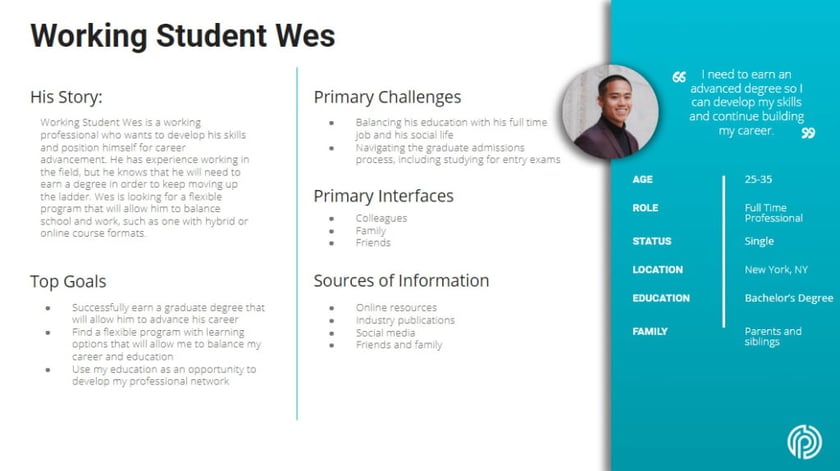
By understanding who your persona is, for example, you will be better able to conceptualize content offers that they will value, identify keywords they are likely to use when searching for a solution to their challenges (which you can use to inform your blog posts), design compelling CTAs that appeal to them, and promote your content through the channels that they are most likely to engage with it.
In short, without a persona, you’re really just shooting in the dark.
2. Building A Content Offer
Your content offer will form a central part of your inbound campaign, and for good reason: Held behind a form, it’s the component that will actually convert your visitors into known contacts and leads.
At the awareness stage, your content offer should be anchored around one primary pain point or challenge that your persona experiences, which is related to the product or service that you are trying to sell to them. The offer should help them understand the challenge, while also making crystal clear how your type of solution can solve the problem. Naturally, this should be informed by your buyer persona.
Some content offer examples are:
- Ebooks
- Webinars
- Free Consultations
3. Creating Relevant Blog Posts
If you think of your content offer as exploring a particular challenge or pain that your persona is experiencing, you can think of your blog posts as a piece of content that explores a symptom of that pain. By addressing these symptoms with content, you are helping your persona understand the true underlying cause of their challenge, while shaping their understanding of that challenge and, hopefully, the various solutions they should consider.
Below is an example of a traditional blog post, from the Friends’ Central School blog.

More often than not, your blog posts will be centered around answering questions that your persona might be asking (through search engines, social media, forums, etc.), which could imply that they are experiencing the underlying problem that your content offer covers. If your content offer is the thing that converts unknown website visitors into known contacts, your blog posts are what attracts those visitors in the first place.
4. Creating Effective Calls-to-Action (CTAs)
Once you have attracted someone to your website with your blog posts, your call-to-action (CTA) is the mechanism that will carry them through to your landing page, where they will be inspired to complete a form and download your content offer.
Below is an example of a visual CTA from Conveyco, a top material handing systems integrator

Traditionally, these are pretty straightforward: In the form of a button or a visual graphic embedded within the body of the blog.
5. Creating Your Content Promotion Plan
You can write 100 blog posts in support of your content offer, but if these articles are never read by anyone, then they will never help you build your database. That’s why every inbound campaign needs to include a content promotion plan designed to get the content in front of your target audience.
Exactly what this looks like will necessarily depend on your industry, business, and persona. But this inbound marketing strategy traditionally revolves around three key prongs of attack:
- Search engine optimization (SEO): SEO-friendly blog posts, you can rank for valuable keywords and bring visitors to your website organically.
- Email marketing: Repurpose content into emails to your database of cold contacts and leads, to reach those contacts and inspire them to reenter your funnel.
- Social Media: Engage your audience of followers to click through to your website, where you are more likely to exert influence and encourage them to take the next step of their journey.
What’s Changed?
Like we mentioned above, the traditional inbound marketing campaign still performs exceptionally well. If you were to simply run with the existing approach as outlined above, you are almost guaranteed to see at least nominal success in reaching your goals.
But things have certainly changed, and for some businesses and industries it will pay to adapt the inbound process to account for these evolutions. Below we take a closer look at the most impactful of these changes.
1. The New Content Offer
An ebook would form the central focus as the content offer for an inbound campaign. But, while there is still a place for ebooks, the simple truth is that, for some audiences, they are no longer as effective at converting as they once were. As industry standards change, so do content marketing strategies. The good news is that there are many other types of content offers that you can build your campaign around, which are highly effective because they have not yet saturated the landscape.
Other Forms of Interactive Content:
- Worksheets
- Calculators
- Tools
Below is an example of a worksheet content offer we developed to help webmasters audit their websites.
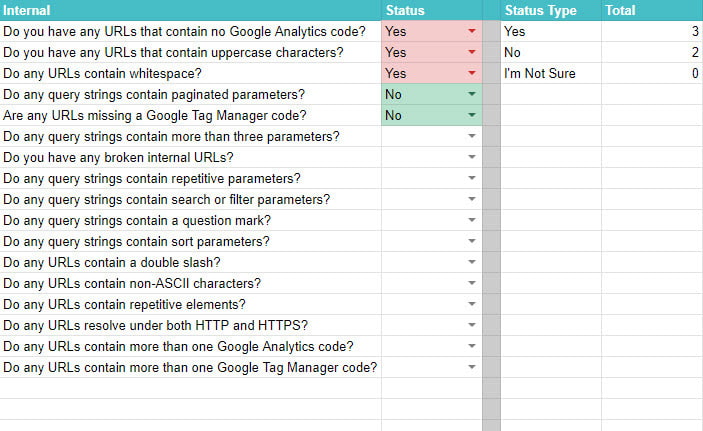
And, as technology continues to improve, these assets become easier and easier to generate. Where once only large corporations had the budget to create these unique assets, they are now within reach for even small businesses.
2. A New Kind Of Blog Post
In the past, a simple 600-word text-only blog post may have been enough to rank for even a fairly competitive term. But as more and more companies have embraced inbound marketing, it’s gotten harder and harder for those kinds of content to rank. There’s simply more great content out there on the internet than there used to be.
That, paired with Google’s stated preference for websites with deep topical authority and a general movement towards topic clusters within the industry has a lot of people wondering: Is the blog post dead?
Our short answer: Absolutely not! But it may need to evolve.
Here are some inbound strategies that make content more competitive:
- Custom graphics
- Shorter blog posts
- Video content
- Podcasts
Below is an example of a blog post from our website which includes video.
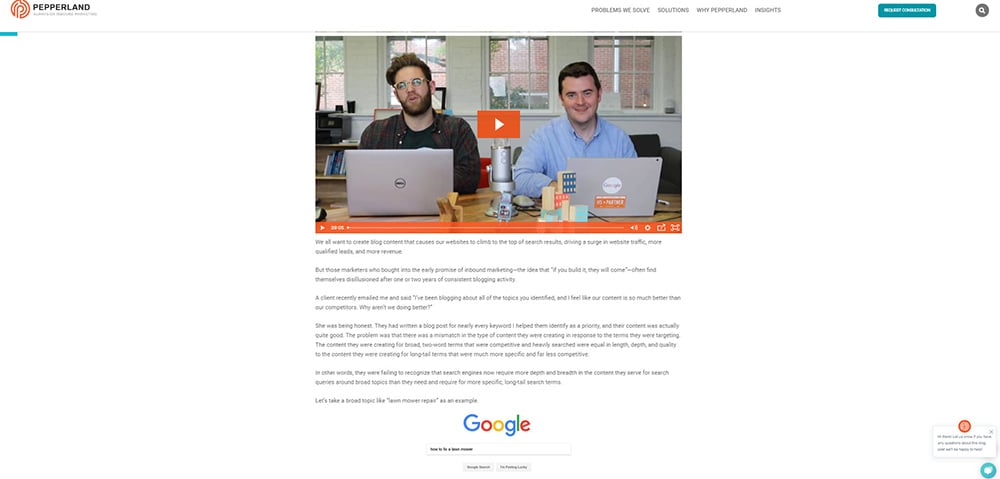
In addition to publishing a blog post, you may also want to consider creating a video on the subject and uploading it to YouTube, or recording a podcast episode and uploading it to iTunes or Spotify. That way, you will have content available in every channel that your target audience may use to find information.
Below is an example of a video carousel that appears on a search results page.
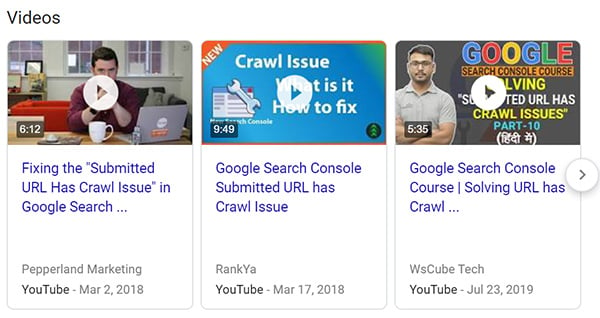
Of course, it is worth noting that these new forms of content will all depend on your persona and the industry that you are operating within.
3. New Ways of Engaging Your Visitors
Back then, calls-to-action took the form of either a button or a visual graphic, and led the user to a landing page that contained a form; forms were essentially the only way for you to capture contact information.
That’s changed. Thanks to an over-saturation of display advertisements on many websites, users have gotten exceptionally adept at ignoring CTAs, and forms in general have lost a lot of their appeal to users. But that doesn’t mean that you have to accept a lower click-through rate or conversion rate as your new status quo. Recent technological advancements have brought new options for many businesses.
For example, not only should you use a traditional CTA but also consider adding in a slide-in or popup that reinforces the message and offers your viewer another opportunity to convert. Because these features often include some form of motion (actually sliding into view), they are harder for a viewer to ignore or overlook, and can show phenomenal conversion rates.
Below is an example of a standard CTA (left) and slide-in (right).
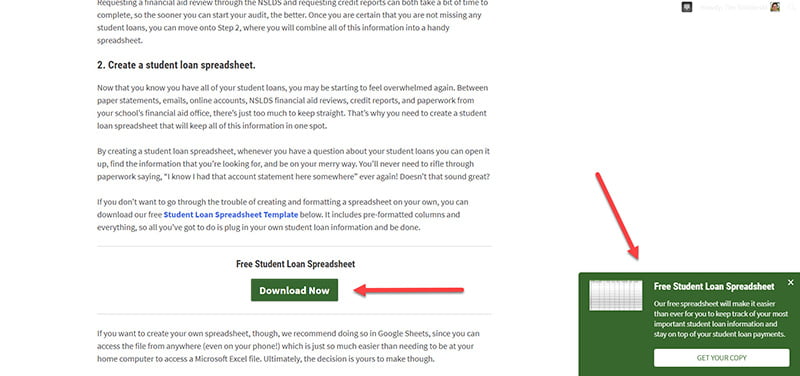
And in addition to the forms that you might place throughout your website (on your contact page, landing page, etc.) you might consider adding a chatbot or live chat function to key pages on your website. These features allow you to capture your visitor’s contact information while appealing to their desire for conversation-based marketing. As you can see in the bottom right corner of the screen, we make use of this here at Pepperland.
While chatbots were designed to capture contact information and answer commonly asked questions that your visitors might have, they can also be used creatively: For example, to deliver a content offer, ask some qualifying questions, etc.
4. New Strategies for Promoting Your Content
Creating SEO-friendly content will always be one of the most effective means of getting your content in front of your target audience. It’s also the method with the greatest ROI and the longest shelf life. That part of the inbound equation hasn’t changed.
The greatest change for content promotion strategies in recent years is in social media: Namely, how businesses utilize their social channels to promote content.
Broadcasting vs. Community Building
In the past, most companies used social channels like Facebook, Twitter, and LinkedIn as a way of broadcasting content. Posts most typically included a link back to a piece of content on the company’s website. A few years ago, this worked: The network algorithms served up those posts organically to a company’s followers, providing a free source of traffic.
As each network expanded their emphasis on advertisements as a means of generating revenue, however, the algorithms began to deprioritize content containing outbound links. The goal? To keep users on Facebook (or LinkedIn, or Twitter) for as long as possible.
Below is an example of a broadcast style social post from Grow Magazine.
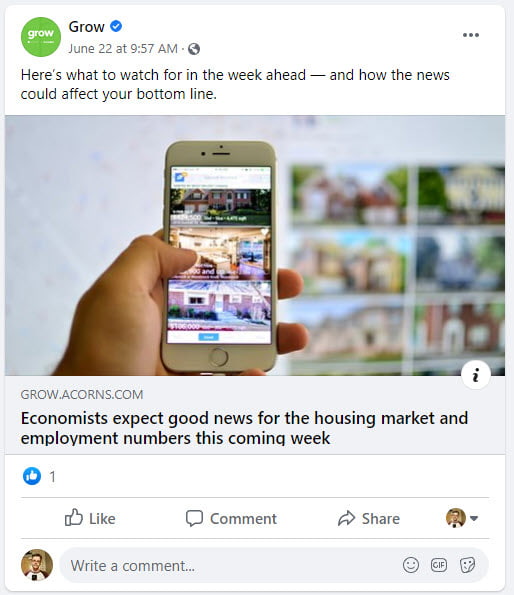
This means that the way you use it needs to shift.
The real opportunity for most businesses is to shift their usage of social media away from broadcasting and instead towards community building by converting social channels into sources of information and inspiration.
Below is an example of a community building Facebook post from HubSpot. Notice the eye-catching graphic, text that sparks interaction, and a lack of link.
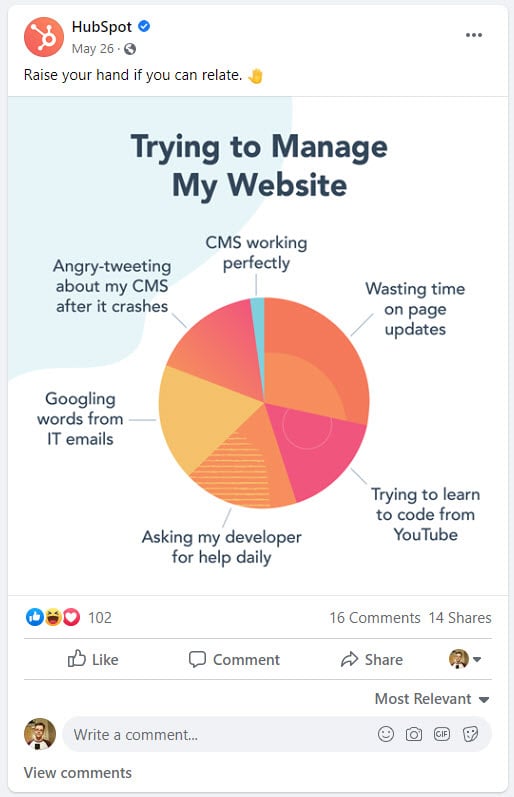
Instead of leading your social posts with a link back to content on your site, you might, for example, start with an interesting quote or statistic or statement—without including a link. These kinds of posts can still perform very well organically through social. Then, in the comments section of your post you might engage with your audience and provide a link back to your website.
Paid Social (Ads)
Though it’s harder than ever for you to get organic reach with your social posts promoting content, the good news is that you can promote your content through paid ads on all of the major social media platforms. Paired with retargeting lists and tailored audiences, these can be an incredibly effective way to reengage people and bring them back to your website.
Below is an example of a paid Facebook ad from HubSpot, leading to a content offer.
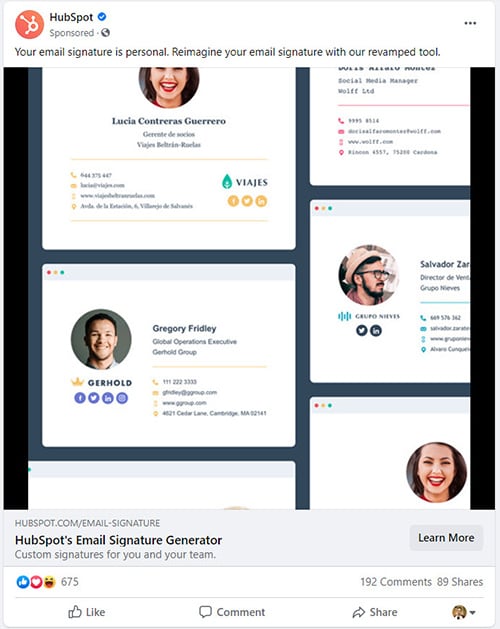
Consider using paid social ads to promote your Rockstar blog content, or even content offers, tools, or other assets that you think will perform well.
5. Automation Opportunities
Marketing and sales automation has been around in various forms for a number of years now. But it has made tremendous leaps in recent years, becoming more reliable, effective, and efficient. Companies which at one time may have felt uneasy relinquishing their grip on the reins are increasingly embracing automation with full-throated conviction, and for one simple reason:
It works.
If your campaign performs the way that you want it to, you’re going to have a lot more contacts in your database and a lot more work to do. Automation can and should be a part of your campaign.
- Email workflows: will make sure every contact in your database receives the right email at the right time to nurture them towards a deal.
- Lead scoring: gauges how your contacts interact with your various channels to identify those most likely to make a purchase.
- Chatbots: gather contact information in place of forms while giving your website a human touch, and can even help act as an early form of sales qualification.
- Task generation, database hygiene, and more can all be handled by automation to make your team more effective and efficient.
Below is an example of a workflow created with database hygiene in mind.
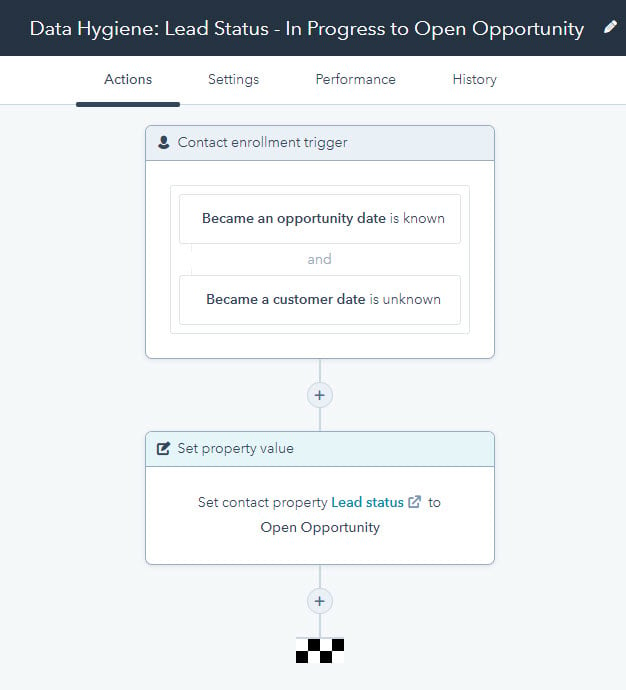
There are many different software options available to help you implement automation on your website to support your inbound campaign. The best options will be those that provide as much functionality as possible within a single system.
As a HubSpot partner agency, we leverage HubSpot in virtually all of our processes, for the simple reason that it is capable of so much—marketing and sales automation in the form of email workflows, sequences, social media scheduling, lead scoring, meeting scheduling, chatbots, and more—all built around a central CRM that keeps each member of our team on the same page. Learn more about our HubSpot onboarding and support services.
Creating a Modern Inbound Campaign
As you move towards creating an inbound campaign, it’s important that you recognize future changes and how they impact your business and your industry.
As an inbound marketing agency, we are constantly strategizing for our clients and testing different ideas to see what works in each unique case. We are always learning and putting those lessons to use empowering our clients to reach their goals. Constant iteration and an adaptable strategy is just what we do.
Don’t want to go it alone? Request a free consultation to see what working with Pepperland on your next inbound campaign could be like.







